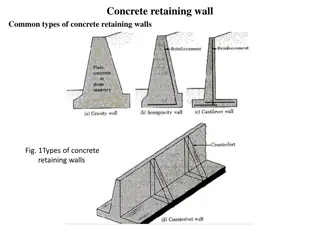Understanding Enamel Caries: Zones and Histopathology
Enamel caries is examined through histopathology, revealing four distinct zones - Translucent, Dark, Body, and Unaffected. Each zone presents unique characteristics, such as pore formation and light absorption. Understanding these zones is crucial for identifying and describing enamel caries accurately.
Download Presentation
Please find below an Image/Link to download the presentation.
The content on the website is provided AS IS for your information and personal use only. It may not be sold, licensed, or shared on other websites without obtaining consent from the author. Download presentation by click this link. If you encounter any issues during the download, it is possible that the publisher has removed the file from their server.
Presentation Transcript
DENTAL CARIES Dept. of Oral Pathology
LEARNING OBJECTIVES At the end of the lecture student should be able to Describe & identify the zones of enamel caries
HISTOPATHOLOGY OF CARIES ENAMEL CARIES The small lesion had has been divided into zones based upon its histological appearance when longitudinal ground sections are examined with light microscope.
It is subdivided into 4 zones Translucent zone at the inner advancing front of the lesion. Dark zone lies superficial to the translucent zone. The Body of the lesion is the third zone and lies between the dark zone and the apparently undamaged enamel surface.. Unaffected zone is the fourth zone and is superficial to the lesion .
Zone 1: TRANSLUCENT ZONE The deepest zone and represents the advancing front of the enamel lesion. Has a structure less appearance when perfused with quinoline solution and examined with polarized light . Pores or voids form along the enamel prism (rod) boundaries, presumably because of the ease of hydrogen ion penetration during the carious process.
When these boundary area voids are fitted with quinoline solution, (same R.I as enamel) the features of the area disappear. The pore column of translucent enamel caries is 1%, 10 times greater than normal enamel.
Zone 2: Dark Zone The next deepest zone is dark zone because it does not transmit polarized light. The light blockage is caused by the presence of many tiny pores too small to absorb quinoline. These smaller air or vapor filled pores make the region opaque.
The total pore volume is 2% to 4% . There is some speculation that the dark zone is not really a stage in the sequence of the breakdown of enamel, rather the may be formed by deposition of ions into an area previously only containing large pores.
ZONE 3 : Body of the lesion: The body of the lesion is the largest portion of the incipient lesion. It has pore volume , varying from 5% at the periphery to 25% at the center. The striae of Retzius are well marked in the body of the lesion indicating preferential mineral dissolution along the areas of relatively higher porosity.
The first penetration of caries enters the enamel surface via the striae of Retzius. The inter prismatic areas and these cross- striations provide access to the rod (prism) cores, which are then preferentially attacked. Bacteria may be present in this zone if the pore size is large enough to permit their entry.
Zone 4: Surface Zone : It has lower pore volume than the body of the lesion (less than 5%) and a radiopacity comparable to unaffected adjacent enamel. It has been hypothesized that hyper mineralization and increased fluoride content of the superficial enamel are responsible for the relative immunity of the enamel surface.
However removal of the hyper mineralized surface by polishing fails to prevent the reformation of a typical well mineralized surface over the carious lesion. Thus , the intact surface over incipient caries is a phenomena of the caries demineralization process rather than any characteristics of the superficial enamel.
1. The path of ingress of an advancing carious lesions is roughly parallel to the long axis of the enamel rods. 2. The advanced smooth surface caries obtains a typical V shaped/ cone shaped lesion whose base is towards the enamel and apex towards the dentin. 3. Eventually there is a loss of continuity of the enamel surface.
SUMMARY -- zones of enamel caries
BIBLIOGRAPHY Text book of oral pathology Shafer's, 5 & 6th edition Color Atlas of Oral Diseases Cawson, R. 2nd edition Oral and Maxillofacial Pathology Neville, Brad W. 2nd Lucas s Pathology Of Tumor s of the Oral Tissues Cawson, R. A., Bennie, W. H 5th edition

















































